Leaves of various plants are a popular element in embroidered or woven designs. They are constantly found in paintings, and not only in still lifes or landscapes. It is not so often that you come across pictures where there would be no twig or flower. Before drawing something large, you need to learn how to draw leaves with a pencil.
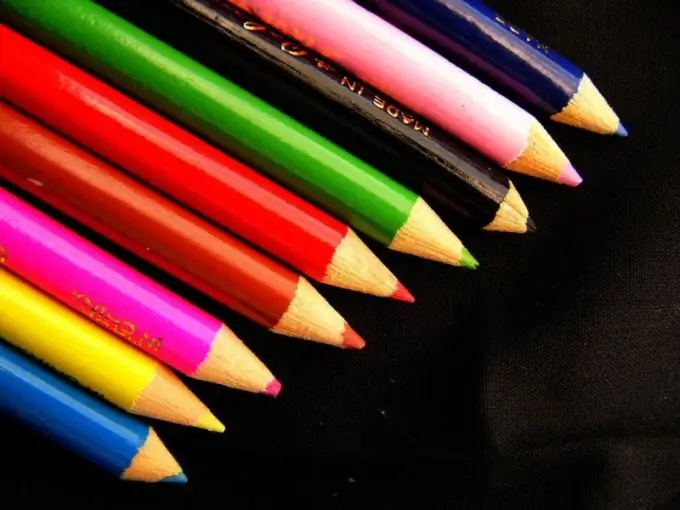
It is necessary
- - paper;
- - pencil;
- - tree leaves or pictures.
Instructions
Step 1
Consider several different leaves. Note that there is a noticeable thick vein in the center of almost all of them. Compare the shape of the leaves of different plants. Among them there are round, oval, heart-shaped. There are also carved ones. It may seem to a novice artist that the lines are too intricate. This is not entirely true. Looking closely at the maple leaf, you will see that it is also built around the central vein.
Step 2
Start with a round leaf. For example, let's say it is an alder leaf. Put the paper as you like. Draw the center vein. She divides the round leaf strictly in half and does not reach the second edge a little.
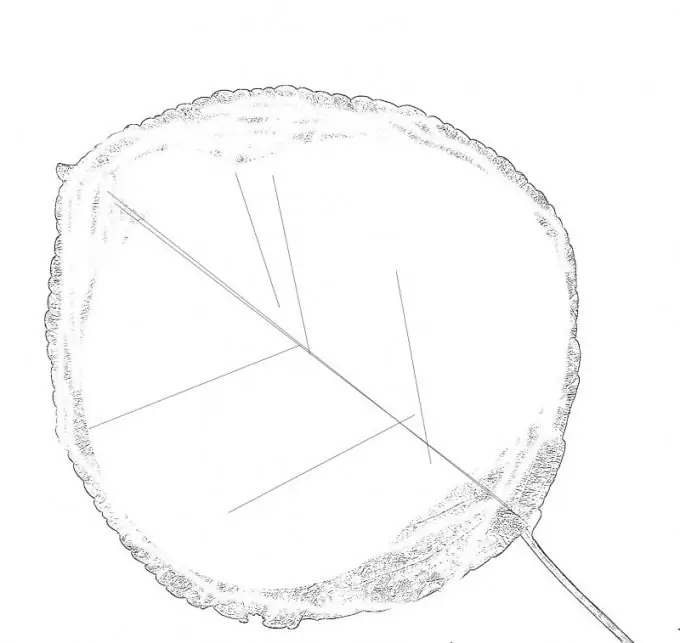
Step 3
Draw a circle, imagining that the vein is the axis of symmetry. It's good that the line is a little uneven. In nature, leaves rarely have perfectly even outlines. You can even make subtle denticles along the edge. Somewhat thinner ones extend from the central vein. Please note that from the side of the petiole, the angle between the main vein and the lateral ones will always be obtuse, and the thin lines themselves are almost symmetrical.
Step 4
The maple leaf fits perfectly into the square. Sketch this geometric shape with a thin pencil, or just imagine it. Draw a center vein perpendicular to the underside of the imaginary square.
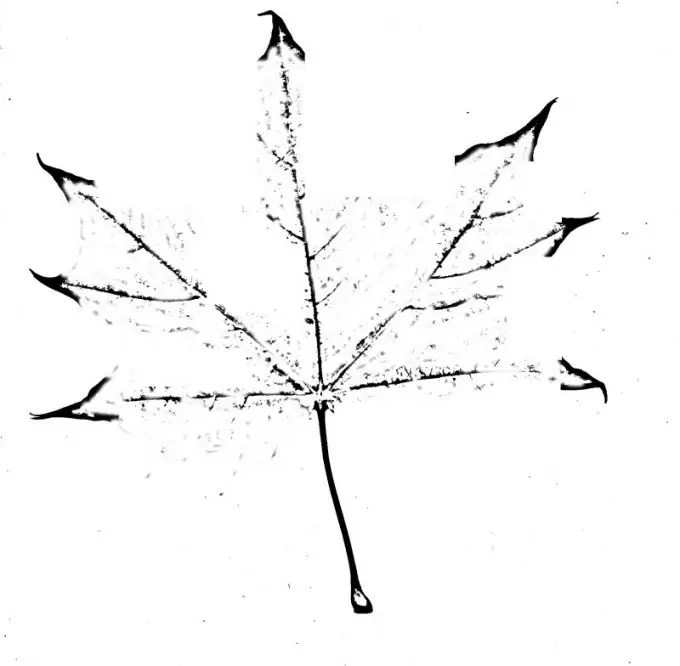
Step 5
Pay attention to how the lateral veins extend from the central one. The lower ones are located at right angles to it. Their total length is approximately equal to the side of your imaginary square. Between them and the central one there are 2 more lines, approximately at an angle of 45 °. Conduct them. From the midpoints of the oblique veins, 2 more, thinner and shorter, depart.
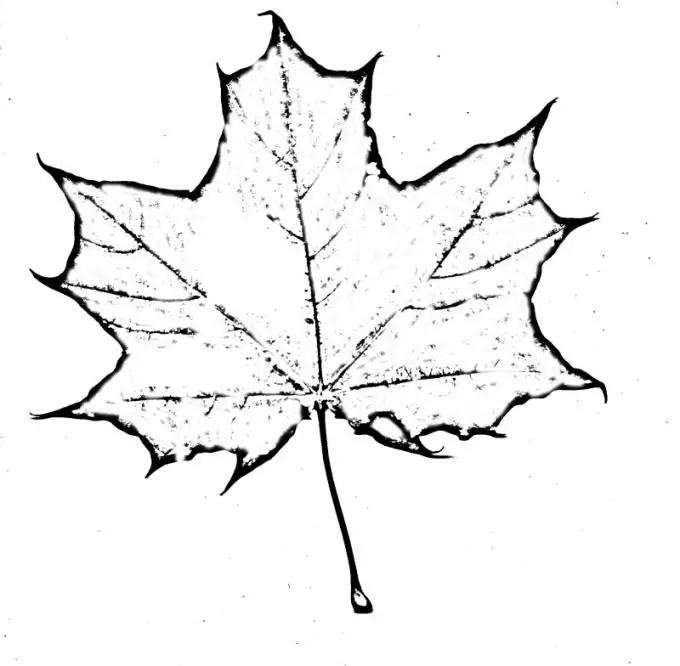
Step 6
Mark the sharp ends of the maple leaf. Of course, it is not worth measuring the angles on the protractor, but they should be approximately the same and rather sharp.
Step 7
Draw the outlines. It is most convenient to do this from the point where the central vein joins the two lower veins perpendicular to it. Note that the line starting from this point describes an uneven arc. Its convex part is directed downward. The line itself is uneven. It is not necessary to strictly observe symmetry in this case.
Step 8
After learning how to draw simple leaves of different shapes, try to depict a complex one or even a twig. A complex sheet consists of several identical small ones. The role of the central vein is played by the petiole, to which single leaflets are attached. Arrange this line at random.
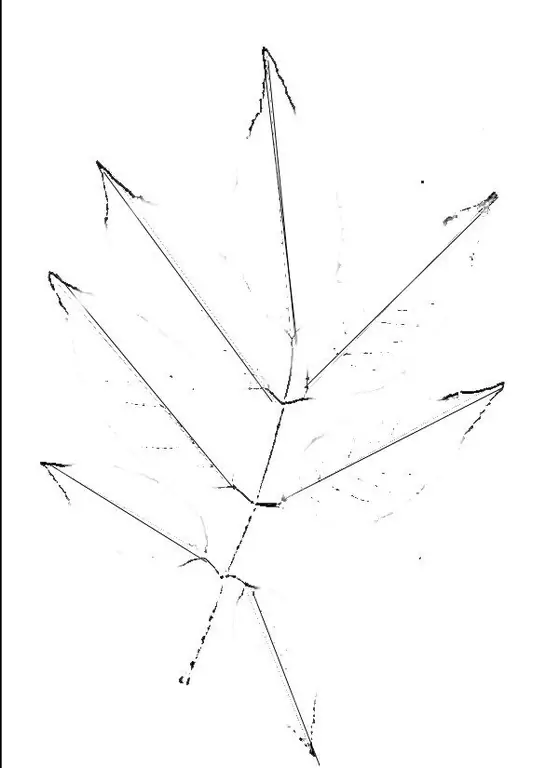
Step 9
Mark the central veins of the single leaves. They depart from the main line at a slight acute angle. Like a single leaf, the obtuse angle is on the side closer to the branch.
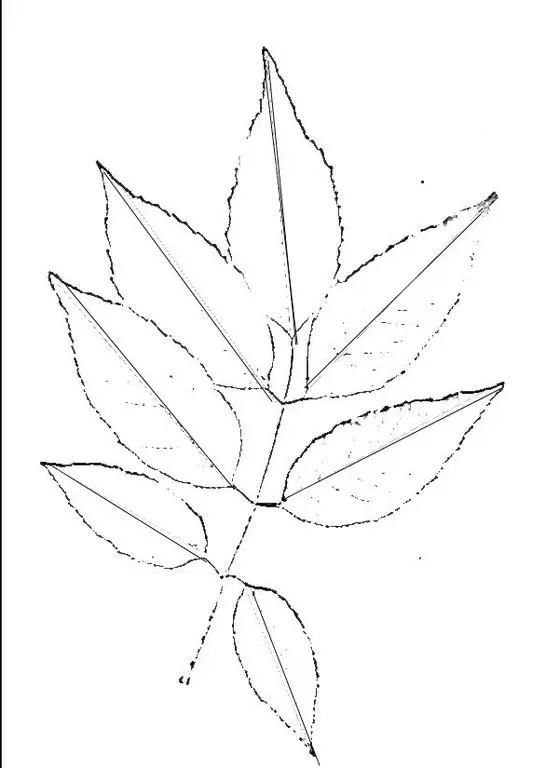
Step 10
Please note that a compound leaf must have one unpaired leaf. It is the same as the others, but its axis continues the central vein.
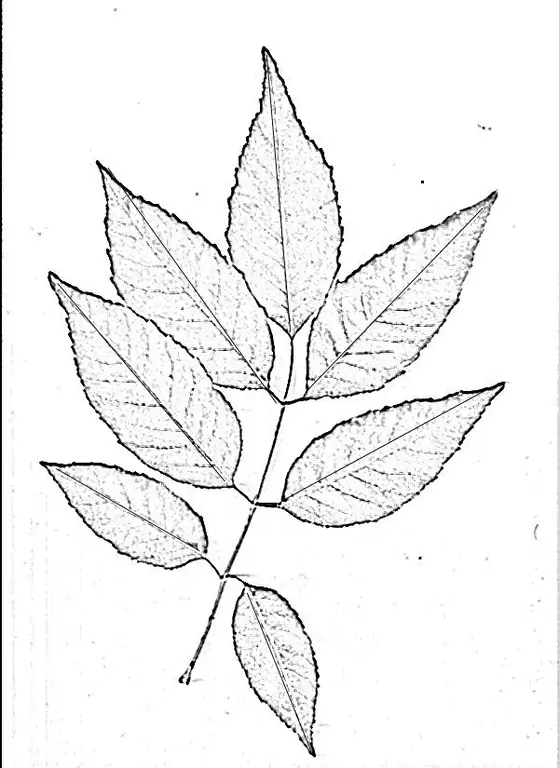
Step 11
Count how many pairs of leaves your composite sheet has. Place their axes at equal distances. They can be oval, in the shape of an elongated heart, with smooth or jagged edges, and at the same time they are not always exactly the same. Draw the outlines of each. With a thin pencil, sketch out the finer veins.






